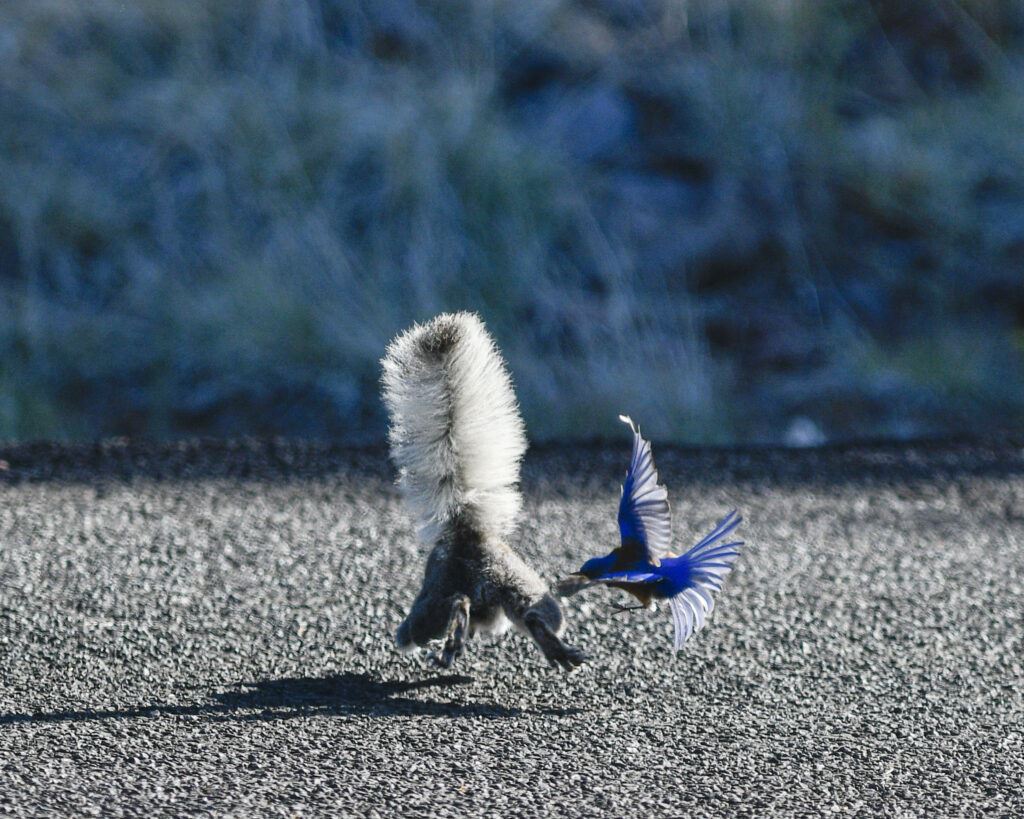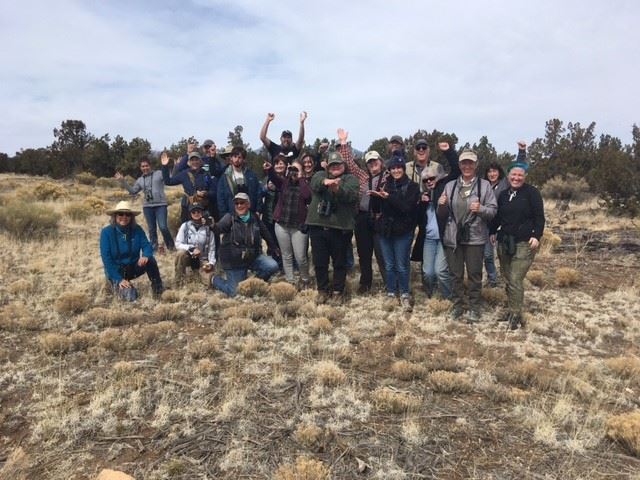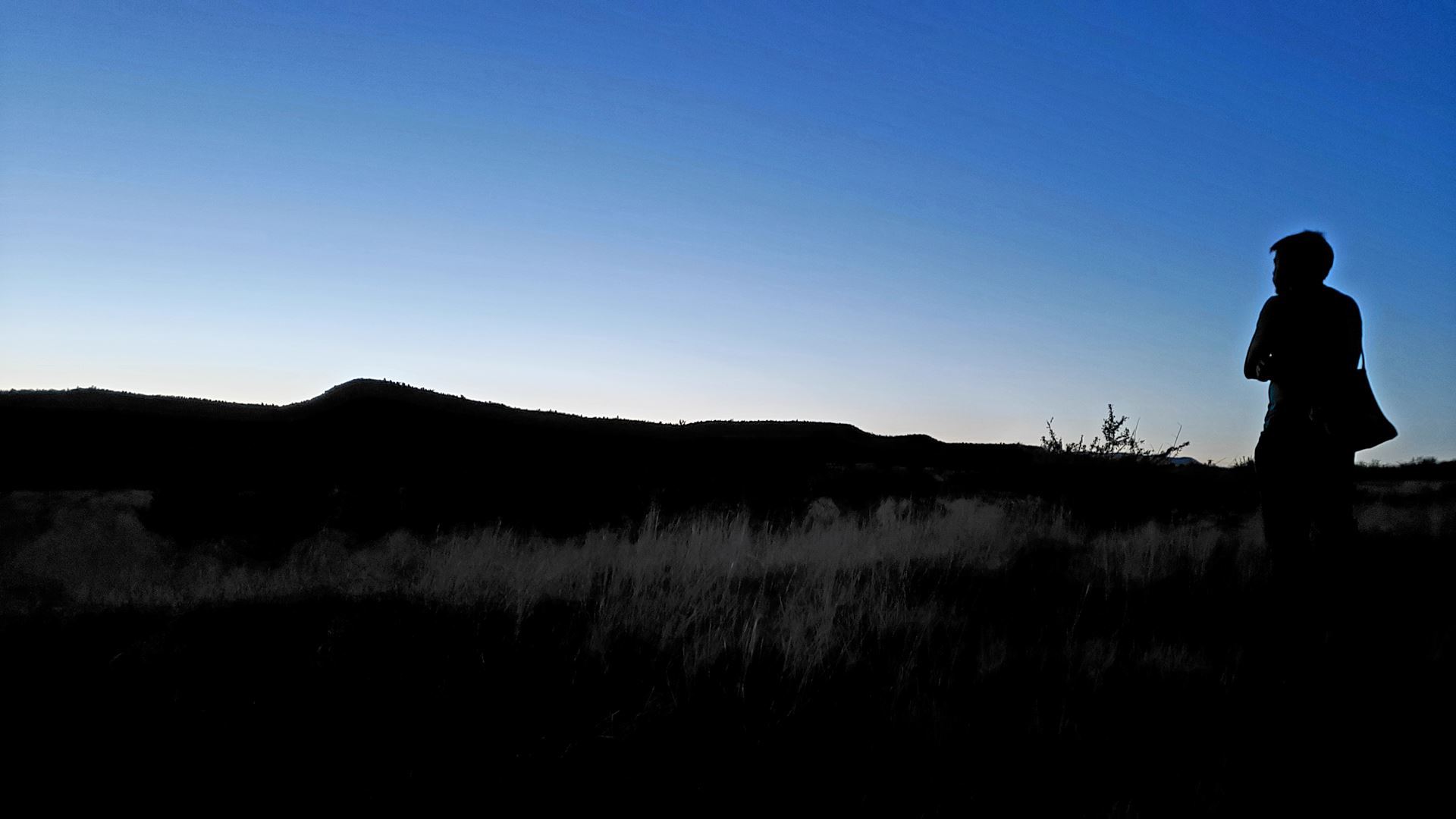Conservation Counts!Birding with a Purpose:One of the ways that NAAS contributes to conservation is to count birds during official bird surveys. Our counts are Community Science initiatives on the fly. NAAS holds field trips that count! Conservation-minded members are invited to join point-count survey teams to learn how counting birds can make a difference. We count birds because it adds to scientific research; without which, no conservation measures would get funded. Whether it’s simply submitting and sharing eBird checklists from our field trips; an organized point-count to understand the decline of a specific species, or species in a certain habitat; or counting every single bird during fun Christmas Bird Counts, counting birds matters. And there’s no need to be an expert. Below are the many opportunities to join our community science projects coordinated or supported by Northern Arizona Audubon Society. Here is a list of the bird surveys we participate in. To learn more, read about each survey: In this Section: Nightjars | Pinyon Jay Community Science Initiative | Bluebird Project NestWatch | Christmas Bird Counts | Colonial Water birds | North American Marsh Bird Survey | Climate Watch | 2025 State of the Birds ReportWhy we count birds:
Christmas Bird Counts:Excitement grows after Thanksgiving to see what birds will show up for the Christmas Bird Counts (CBC) which is a bird population survey. It is the longest-running bird count in history: “Audubon and other organizations use data collected in this long-running wildlife census to assess the health of bird populations, and to help guide conservation action. The data collected by observers over the past century allow Audubon researchers, conservation biologists, wildlife agencies and other interested individuals to study the long-term health and status of bird populations across North America.” History and video of CBC Long-term trends in that data show dramatic changes in bird communities, even within the past few decades. Thirty-five years ago, about 1,500 count circles recorded 100 million individual birds. In comparison, for the 122nd count last year, more than 2,600 groups counted only 42 million birds. That means that participants are seeing less than half as many birds three decades later, even though the coverage and effort have substantially increased. Decline in numbers NAAS sponsors four CBCs: Surveyors of all levels of birding are encouraged to join in these important and very fun counts! (Think birding with friends, eating chocolate and drinking hot beverages... what could be more fun?!) 2025/6 Christmas Bird Count dates and compilers:
Note: Do not sign up on Meetup. You must email the compiler in charge of the count in order to be assigned to a team. Bluebird Project NestWatch:NAAS's "Bluebirders" monitoring project requires a commitment to join a team of 3-4 other monitors who take turns checking bluebird boxes each week. Each person goes out approximately once a month. The season runs from the end of March through the end of August. NestWatch is a nationwide nest-monitoring program designed to track status and trends in the reproductive biology of birds. Participating in NestWatch is easy and anyone can do it. Cornell's Project NestWatch Conducted: Late spring through summer at NAAS Sanctuaries: Kachina Wetlands and Picture Canyon Contact: Bluebird NestWatch monitoring is currently full. To put your name on a waitlist to become a “Bluebirder”, contact Lori Kruse - loriwkruse@gmail.com for more information. "We have 10 volunteers altogether. I love seeing the babies and the very busy adults and it is always nice to have an excuse to walk along the trails." - Bluebirder, Lori Kruse.
Photo provided by Matt Anderson - Bluebirder
| NavigateUpcoming Events
|
Colonial Waterbird Surveys:
This is a great survey for beginners. Counting large birds in stationary nests makes for a fun first survey. In the late winter, Great Blue Heron rookeries are surveyed for adults and active nests.
Arizona Coordinated Bird Monitoring Program
"Nationally, the North American Breeding Bird Survey (BBS) and Christmas Bird Count (CBC) have indicated downward trends for many species. Many of Arizona’s bird species have limited distribution, and thus are poorly monitored by the BBS, CBC, and other large-scale surveys. These surveys do not adequately sample major bird groups, including: 1) species that breed in marsh, riparian, and grassland habitats, 2) Sonoran Desert species that breed earlier or later than when most BBS surveys are conducted, 3) colonial nesting species, and 4) nocturnal species. Therefore, biologically important population information is lacking for a suite of species." ABCI species of concern
Conducted: 3 times at each site/2 weeks apart, during February-March
To become a “Colonial Waterbirder” contact: Kay Hawklee – khawklee@gmail.com
North American Marsh Bird Survey:
This survey uses the North American Marsh Bird Monitoring Protocol. Results are sent in to the U.S. Fish and Wildlife Service. Species in our area: Virginia Rail, Sora, Least Bittern, Pied-billed Grebe and American Coot. "There was a need for targeted efforts to focus specifically on marsh birds in order to advance the understanding of abundance, population trends, and effects of management actions on marsh birds." - Conway, CJ. 2015. National protocol framework for the inventory and monitoring of secretive marsh birds. Inventory and Monitoring, National Wildlife Refuge System, U.S. Fish and Wildlife Service, Fort Collins, Colorado.
“Populations of marsh birds may be affected by accumulation of environmental contaminants in wetland substrates because they consume a wide variety of aquatic invertebrates (Odom 1975; Klaas et al. 1980; Eddleman et al. 1988; Gibbs et al. 1992; Conway 1995). Marsh birds are also vulnerable to invasion of wetlands by many invasive plant species (e.g. Lythrum salicaria, hybrid Typha, Phalaris arundinacea, Phragmites, etc.) (Gibbs et al. 1992; Meanley 1992). Hence, marsh birds may represent “indicator species” for assessing wetland ecosystem quality, and their presence can be used as one measure of the success of wetland restoration efforts (Lewis and Casagrande 1997).” View Source
Conducted 3 times at each site/2 weeks apart, during April-May
To become a “Marsh birder” contact : Kay Hawklee – khawklee@gmail.com
Climate Watch
This important study is missing from our repertoire of bird surveys. NAAS currently has no coordinator. To become the Climate Watch Coordinator, please email Kay Hawklee at khawklee@gmail.com.
Climate Watch Local Coordinators are volunteers who manage their group or area’s participation in Climate Watch by recruiting participants, training them to plan and conduct Climate Watch surveys, and ensuring that the data they collect are submitted to the national Climate Watch team. The coordinator also communicates the science and rationale behind the program, including providing information on the predicted future range changes of the target species. Without a regional coordinator, coordinators will also serve as the main point of contact with the national Climate Watch team and help to improve the program by providing feedback based on their group’s experiences. Climate Watch survey
Reports that explain why we count:
State of the Birds Report:
This report is the most recent and it explain why we must participate in surveys: Executive summary 2025 State of the Birds Report
Survival by Degrees report:
North America Has Lost More Than 1 in 4 Birds in Last 50 Years.
For the first time, researchers have estimated the volume of total avian loss in the Western Hemisphere—and it’s not just threatened species that are declining - backyard favorites are also losing ground too. "Multiple, complex environmental factors including pesticide use, insect declines, and climate change, as well as direct threats like outdoor cats and glass skyscrapers, are also hitting birds from a range of angles."
- North America has lost more than 1-4 birds last 50 years new study says
- Audubon Conservation & Advocacy
- Decline of North American Avifauna
- 2025 State of the Birds Report, Key Findings



.jpg)


